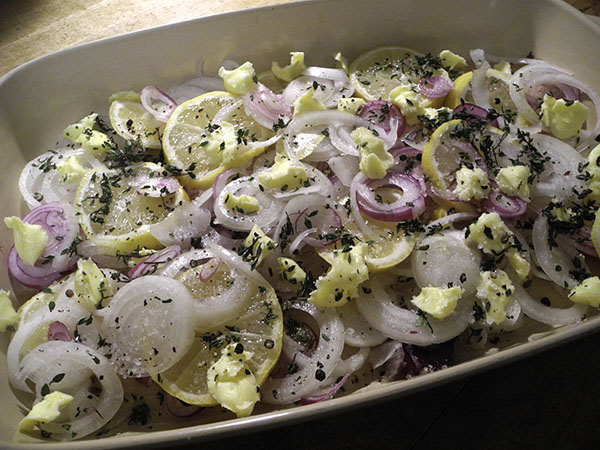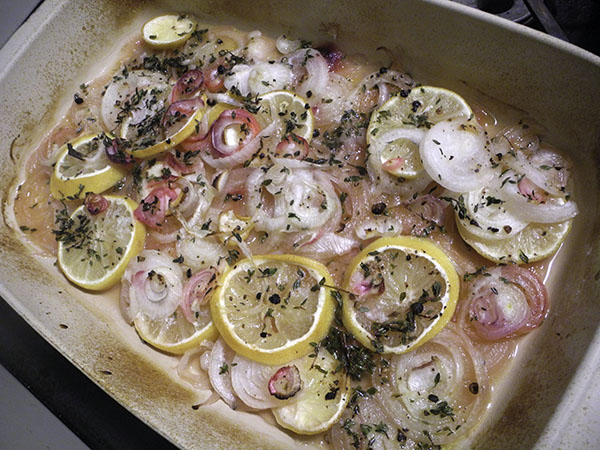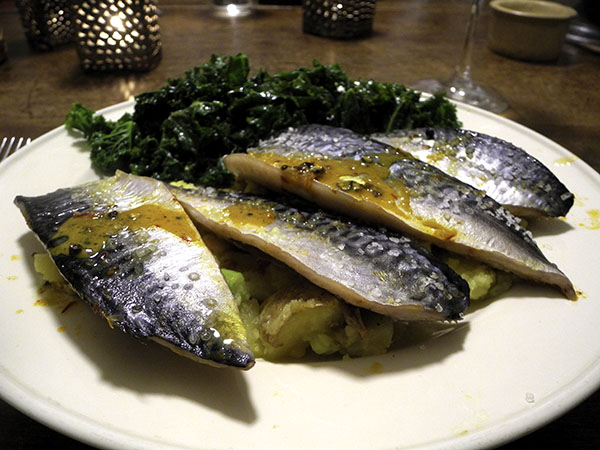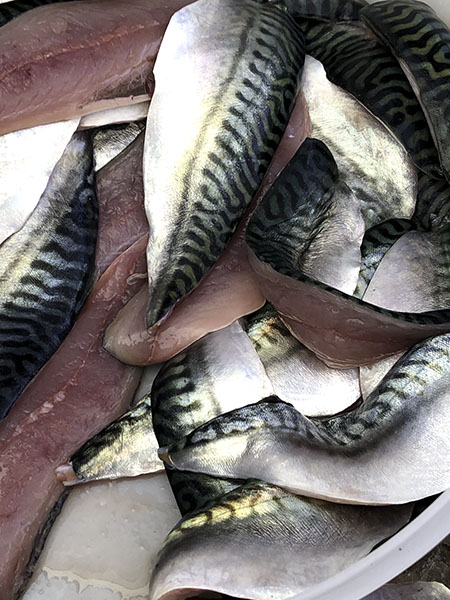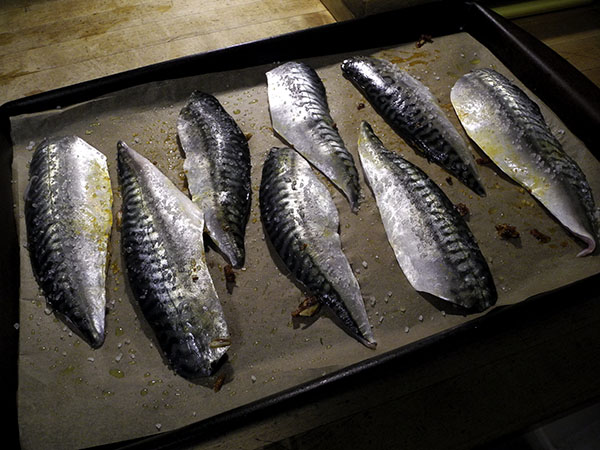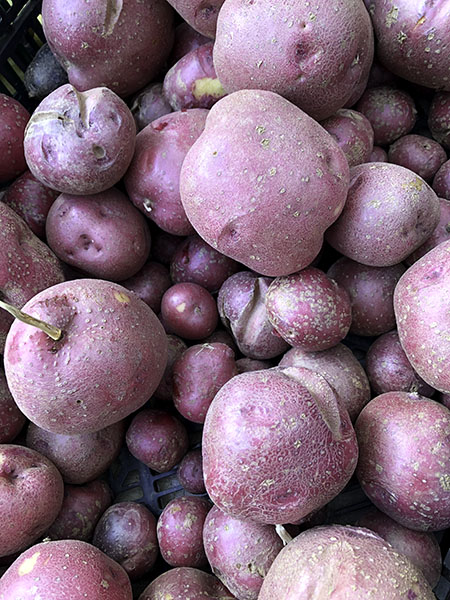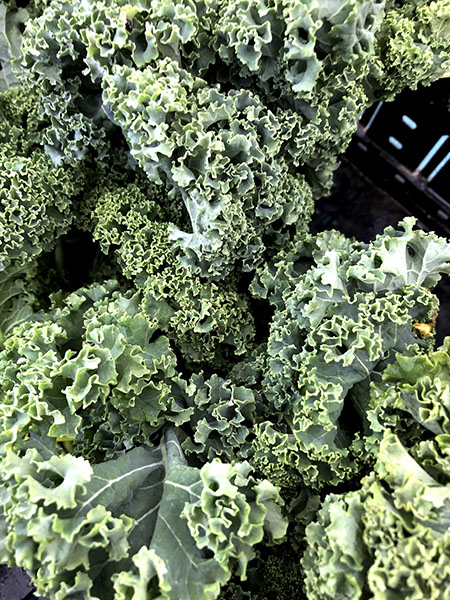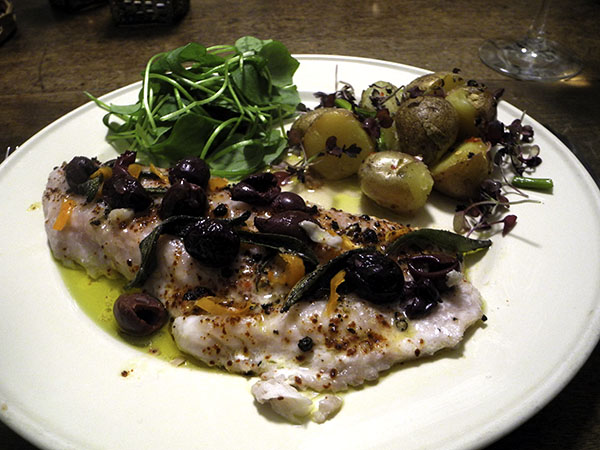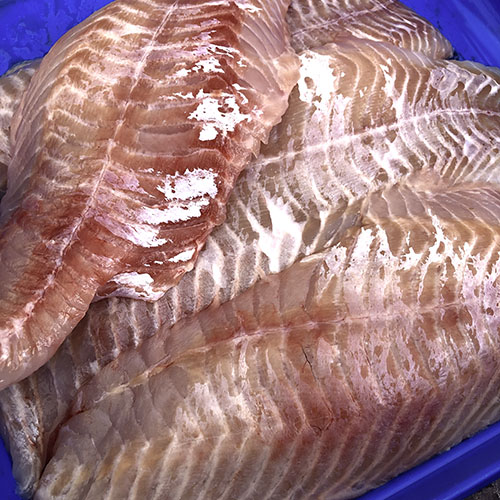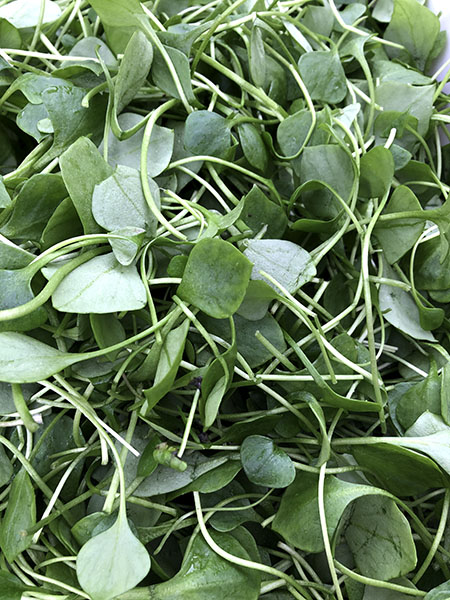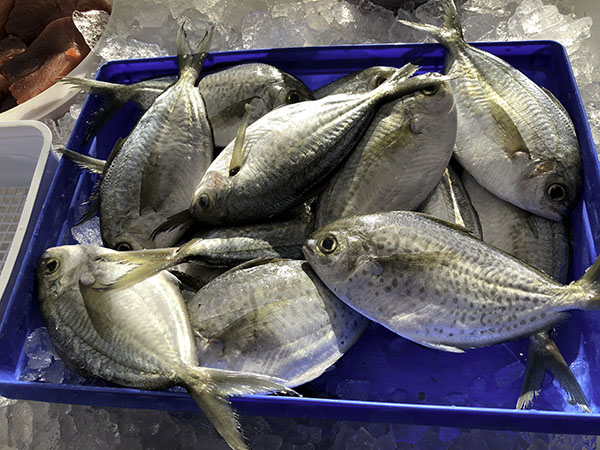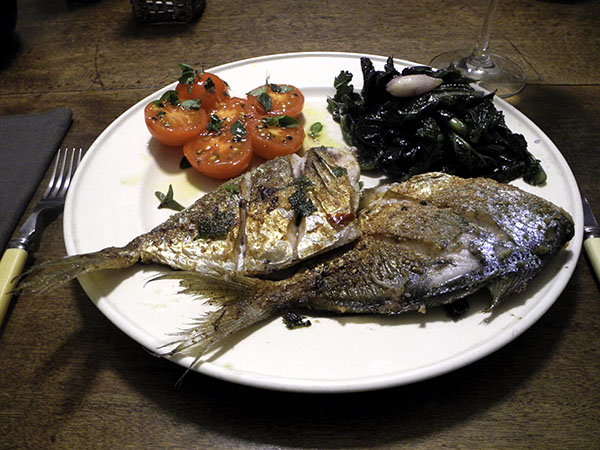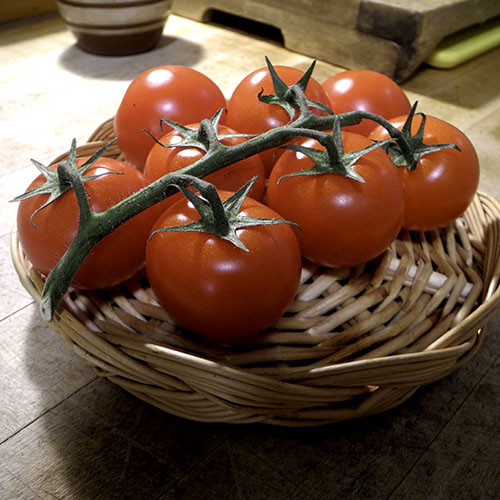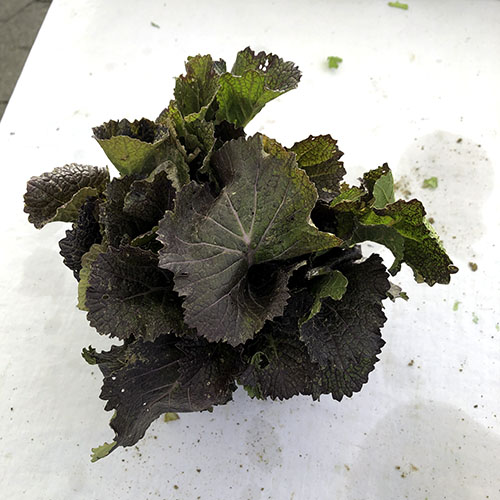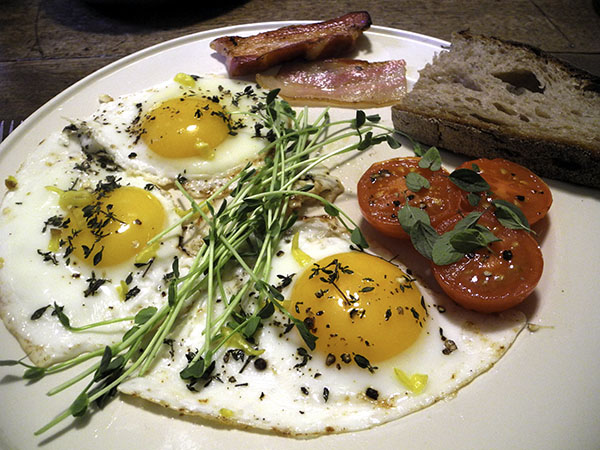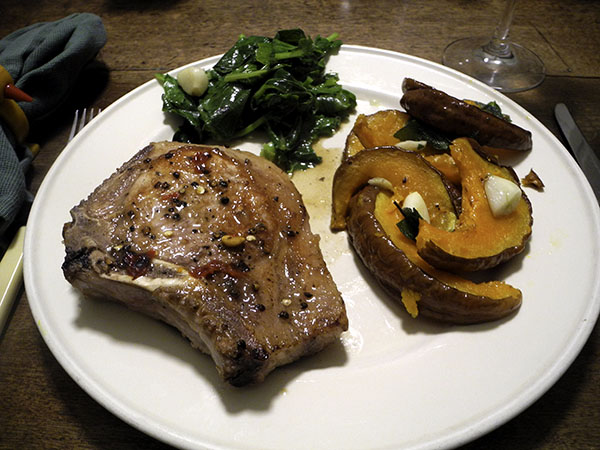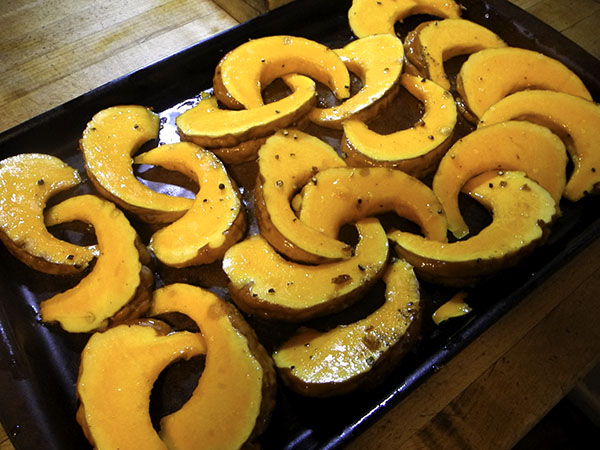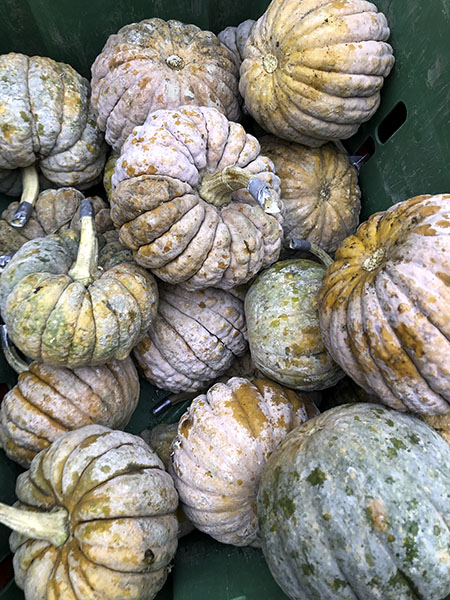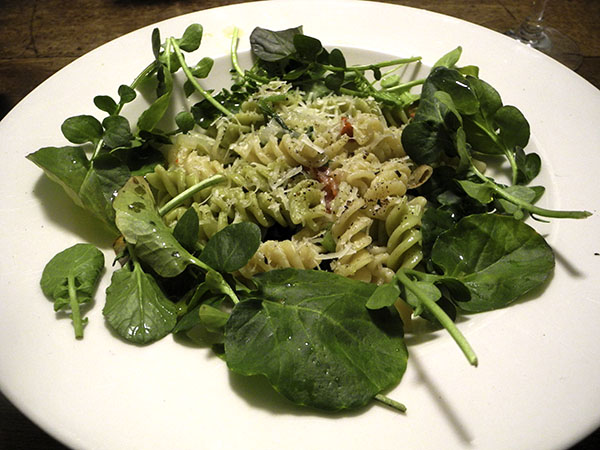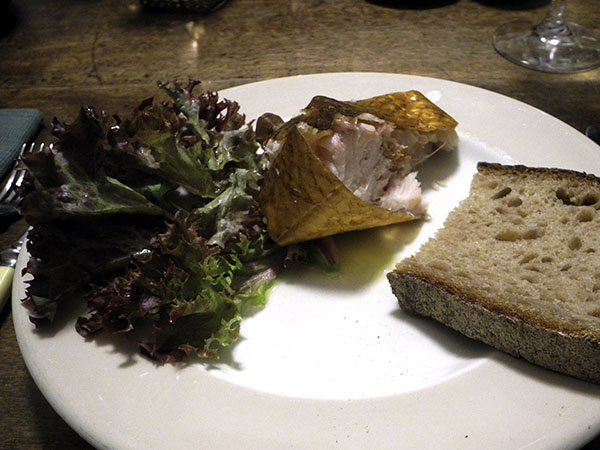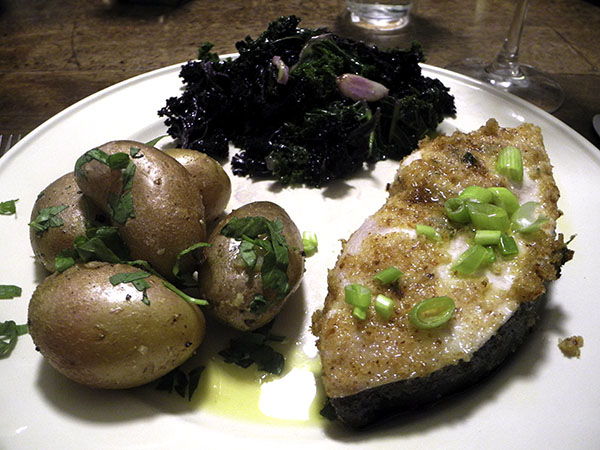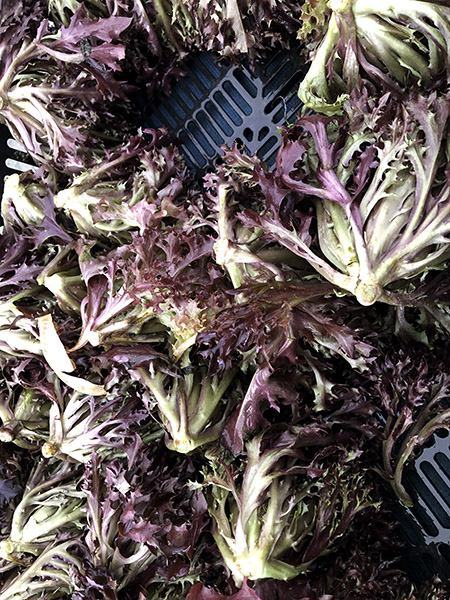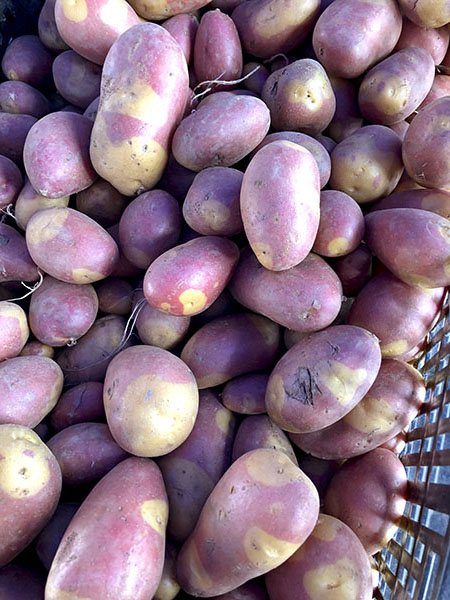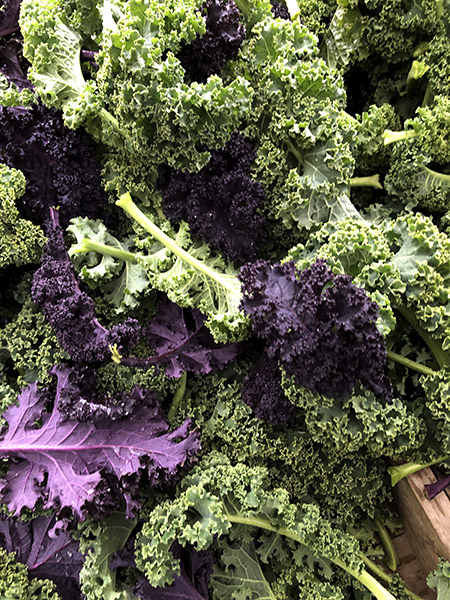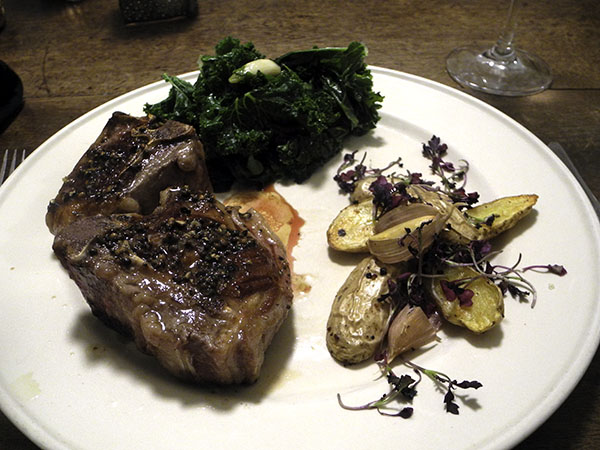
Nothing new here, since every one of its parts has appeared here several times before, but they were all really at their best on Sunday night.
I can say that I’m getting good at putting these things together in a surprisingly short time: This one took just under an hour.
- four thick lamb loin chops from Walter Adam‘s Shannon Brook Farm stall in the Union Square Greenmarket, brought to room temperature, dried thoroughly, cooked on a very hot enameled cast iron grill pan for a total of 11 or 12, turning them over thrice this time, seasoned with sea salt and freshly-ground black pepper after the first turn, finished by spreading a bit of a defrosted sauce, frozen after an earlier meal of lamb, that included toasted yellow mustard seeds and toasted Sicilian fennel seeds in cooked juices
- a few small La Ratte fingerlings from Berried Treasures Farm, halved lengthwise, tossed with oil, 3 unpeeled rocambole garlic cloves from Keiths Farm, a small amount of crushed dried habanada pepper, sea salt, and fresly-ground black pepper, roasted inside a small Pampered Chef ceramic oven pan, cut side down, in a 400º oven for less than 15 minutes, scattered with red micro mustard from Norwich Meadows Farm
- the smaller amount that remained from an earlier meal of a bunch of winterbor kale from Lucky Dog Organic Farm, washed, drained, wilted in a little olive oil in which 2 bruised garlic cloves had first been allowed to sweat and begin to color, seasoned with sea salt, freshly-ground black pepper, and drizzled with a little more olive oil
- the wine was a Spanish (Rioja) red, CVNE, Rioja Reserva 2013, from Flatiron Wines
- the music was Handel’s 1737-1738 opera, ‘Faramondo’, Diego Fasolis conducting I Barocchisti and the Swiss Radio Chorus; noting that the story, itself, entirely imaginary, includes the mythological King of the Franks, Pharamond, circa 420 AD, and the early history of France: (any reference to actual history is mostly missing from the story of love conquers all, after the classic operatic obstacles)

